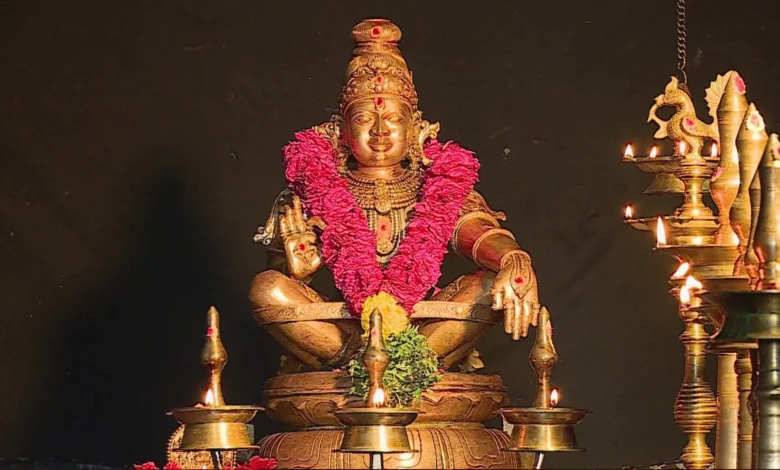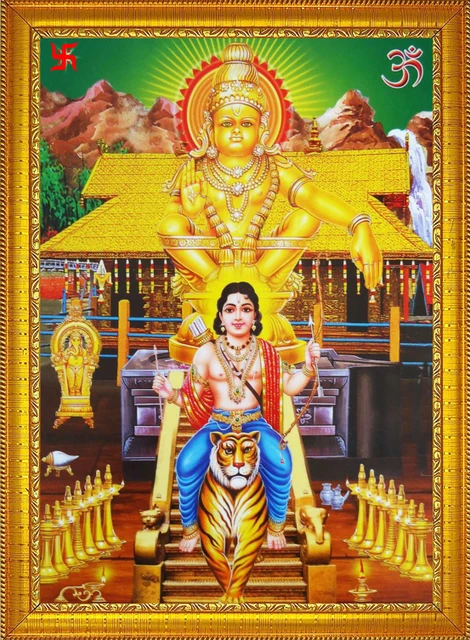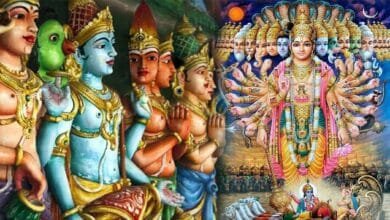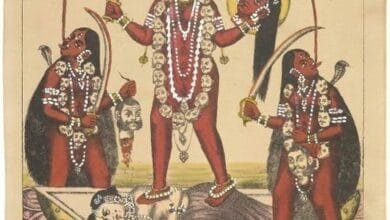Lord Ayyappan: The Divine Protector of Sabarimala – Complete information of Swami Ayyappan

Lord Ayyappan, also known as Swami Ayyappan or Dharma Sastha, stands as one of the most revered deities in Hindu tradition, particularly in South India. This divine figure represents the perfect union of Lord Shiva and Mohini (the female incarnation of Lord Vishnu), embodying the harmonious blend of two powerful cosmic forces. Millions of devotees undertake the sacred pilgrimage to Sabarimala temple in Kerala each year, seeking his blessings and experiencing spiritual transformation.
The Birth Story of Swami Ayyappan
The legend of Ayyappan’s birth is a fascinating tale of divine intervention. When demons threatened the balance of the universe, Lord Vishnu took the form of Mohini, the enchanting celestial maiden. From the union of Shiva and Mohini was born Ayyappan, a child destined to restore dharma and vanquish evil forces.
The infant was discovered by King Rajasekara of Pandalam, who was childless and praying for an heir. The king found the divine child near the Pampa river, wearing a golden bell around his neck. Moved by compassion and recognizing the child’s divine nature, he adopted him and named him Manikandan.

The Life and Mission of Lord Ayyappan
Childhood Miracles
Even as a young prince, Manikandan displayed extraordinary abilities. He mastered all forms of knowledge, martial arts, and scriptures with minimal instruction. His divine purpose began revealing itself through various miraculous incidents that amazed the royal court and common people alike.
The Mahishi Legend
The defining moment in Ayyappan’s earthly mission came when he confronted Mahishi, a powerful demoness who had received a boon that she could only be defeated by the son of Shiva and Vishnu. Mahishi had been terrorizing the three worlds, and only Ayyappan could fulfill this cosmic destiny.
When the queen (influenced by a palace maid) feigned illness and demanded tigress milk as a cure, it was a divine plan to send Ayyappan on his ultimate mission. The young prince ventured into the forest, defeated Mahishi, and returned riding a tigress, accompanied by other wild animals transformed into his divine attendants.
Sabarimala Temple: The Sacred Abode
The Sabarimala temple, nestled in the Western Ghats of Kerala, serves as the principal shrine dedicated to Lord Ayyappan. Situated at an elevation of approximately 914 meters, this ancient temple attracts one of the largest annual pilgrimages in the world, with devotees numbering in millions during the pilgrimage season.
The 41-Day Vratham (Penance)
Devotees preparing for the Sabarimala pilgrimage observe a strict 41-day penance period known as vratham. During this sacred period, pilgrims:
- Wear black or saffron clothes symbolizing renunciation
- Abstain from worldly pleasures and maintain celibacy
- Follow a vegetarian diet and avoid intoxicants
- Practice daily prayers and meditation
- Address each other as “Swami,” acknowledging the divine in everyone
- Walk barefoot as a mark of humility
This spiritual discipline purifies the mind and body, preparing devotees for the arduous trek and divine darshan.

Significance and Symbolism
The Eternal Celibate
Lord Ayyappan is revered as a Brahmachari (celibate deity), representing the power of self-control and spiritual discipline. This aspect makes him particularly appealing to devotees seeking inner strength and focus in their spiritual journey.
Unity and Harmony
Born from the union of Shiva and Vishnu, Ayyappan symbolizes the unity of different traditions within Hindu philosophy. He represents the breaking down of sectarian barriers and the celebration of universal spirituality.
The 18 Sacred Steps
The 18 steps leading to the Sabarimala sanctum sanctorum hold deep spiritual significance. Each step represents:
- The five sense organs
- The eight types of pride or ashta ragas
- The three gunas (qualities): sattva, rajas, and tamas
- Avidya (ignorance) and vidya (knowledge)
Only those who carry the sacred irumudi (two-compartment cloth bundle) on their heads are permitted to climb these holy steps.
Ayyappan Worship and Rituals
Daily Worship Practices
Devotees worship Lord Ayyappan through various practices:
- Morning prayers: Chanting Ayyappan mantras like “Swamiye Saranam Ayyappa”
- Offering: Lighting lamps with ghee and offering flowers
- Bhajans: Singing devotional songs praising the lord
- Fasting: Observing fasts on Saturdays and during Mandala Kalam
Major Festivals
Mandala Pooja (November-December): The first 41-day pilgrimage season culminating in special rituals.
Makaravilakku (January): The most auspicious festival when the celestial Makara Jyothi appears on Ponnambalamedu hill, witnessed by millions of devotees.
Vishu (April): The Malayalam New Year celebration with special prayers.

The Philosophy Behind Ayyappan Worship
Lord Ayyappan’s teachings emphasize:
- Equality: All devotees, regardless of caste, creed, or social status, are equal before the lord
- Self-discipline: The vratham teaches control over senses and desires
- Environmental consciousness: The pilgrimage through forests instills respect for nature
- Community harmony: Addressing everyone as “Swami” fosters brotherhood
- Spiritual transformation: The journey represents the soul’s path toward enlightenment
Ayyappan Photos HD: Capturing Divine Grace
Devotees worldwide seek high-quality images of Lord Ayyappan for worship and meditation. Popular depictions show:
- Classic pose: Seated in meditation with a yoga patta (band) around his knees, holding arrows
- Childhood form: As young Manikandan with the royal family
- Victory pose: Standing triumphant after defeating Mahishi
- Abhaya mudra: Offering blessings and protection to devotees
These sacred images serve as focal points for devotion, with many households maintaining dedicated spaces for Ayyappan worship adorned with his photographs.
The Pilgrimage Experience
The Sacred Journey
The traditional pilgrimage route passes through dense forests, challenging terrains, and sacred rivers. Pilgrims begin at Erumeli, performing the Petta Thullal (a ritual dance), then proceed through Pampa river, Sannidhanam forest, and finally reach the temple premises.
The Irumudi Kettu
The two-compartment cloth bundle carried on the head contains:
- Front compartment: Coconut filled with ghee for offering, symbolizing the ego to be surrendered
- Rear compartment: Personal items and prasadam for the return journey
Neyyabhishekam
The ritual anointing of the deity with sacred ghee brought by pilgrims in their coconuts represents the offering of one’s ego and attachments at the lord’s feet.
Global Appeal of Swami Ayyappan
While primarily popular in South India, especially Kerala, Tamil Nadu, and Karnataka, Ayyappan worship has spread globally:
- Temples dedicated to Ayyappan exist in the United States, Malaysia, Singapore, and the Middle East
- Non-resident Indian communities maintain strong devotional traditions
- The universal message of equality and discipline resonates across cultures
Health Benefits of the Pilgrimage
The Sabarimala pilgrimage offers numerous physical and mental benefits:
- Physical fitness: The trek improves cardiovascular health and stamina
- Mental clarity: Meditation and prayer enhance focus and reduce stress
- Detoxification: The simple vegetarian diet cleanses the body
- Community bonding: Shared spiritual experiences create lasting connections
- Discipline: The vratham builds willpower and self-control
Modern Relevance
In today’s fast-paced world, Lord Ayyappan’s teachings remain profoundly relevant:
- Stress management: The meditation practices reduce anxiety
- Ethical living: Emphasis on truthfulness and righteousness guides moral conduct
- Environmental protection: Reverence for forests promotes ecological awareness
- Social harmony: The principle of equality addresses contemporary social issues
- Youth guidance: The celibate deity serves as a role model for focused achievement
Ayyappan Mantras and Their Power
Primary Mantra
“Swamiye Saranam Ayyappa” (Lord Ayyappa, I surrender unto you) – This powerful mantra repeated during the pilgrimage creates a meditative state and invokes divine protection.
Other Important Chants
- Saranaghosha: “Harivarasanam Viswamohanam” – The lullaby sung before closing the temple
- Pranayama mantra: Invoking the lord during meditation
- Ashtottara Shatanamavali: 108 names of Lord Ayyappan for deep devotion
Lord Ayyappan represents timeless spiritual principles wrapped in an inspiring divine narrative. Whether you’re a devoted pilgrim planning your Sabarimala journey, someone seeking spiritual guidance, or simply exploring Hindu traditions, Swami Ayyappan’s message of discipline, equality, and divine grace offers profound wisdom.
The annual sight of millions walking together, chanting “Swamiye Saranam Ayyappa,” carrying their faith on their heads in the form of irumudi, and climbing the 18 sacred steps represents one of humanity’s most beautiful expressions of devotion and brotherhood.
As we reflect on this divine protector’s life and teachings, we’re reminded that true spirituality transcends rituals—it’s about transforming ourselves into better human beings, treating all with respect, maintaining discipline in our actions, and ultimately recognizing the divine spark in every soul we encounter.
Swamiye Saranam Ayyappa!
Frequently Asked Questions
Q: Who can visit Sabarimala temple? A: Devotees of all faiths who observe the 41-day vratham can visit. Traditionally, women of menstruating age (10-50 years) were restricted, though this has been a subject of recent legal and social discussion.
Q: What is the best time to visit Sabarimala? A: The main pilgrimage season runs from November to January, with Mandala Pooja and Makaravilakku being the most auspicious times.
Q: How long does the trek take? A: The trek from Pamba to Sannidhanam takes approximately 4-6 hours depending on crowd and individual fitness levels.
Q: Can first-time pilgrims go alone? A: It’s recommended to go with experienced devotees who can guide you through the rituals and trek safely.
Q: What does Ayyappan symbolize? A: Lord Ayyappan symbolizes the unity of different traditions, self-discipline, equality, and the triumph of good over evil.
follow us on x.com
Discover more from Sanatan Roots
Subscribe to get the latest posts sent to your email.


